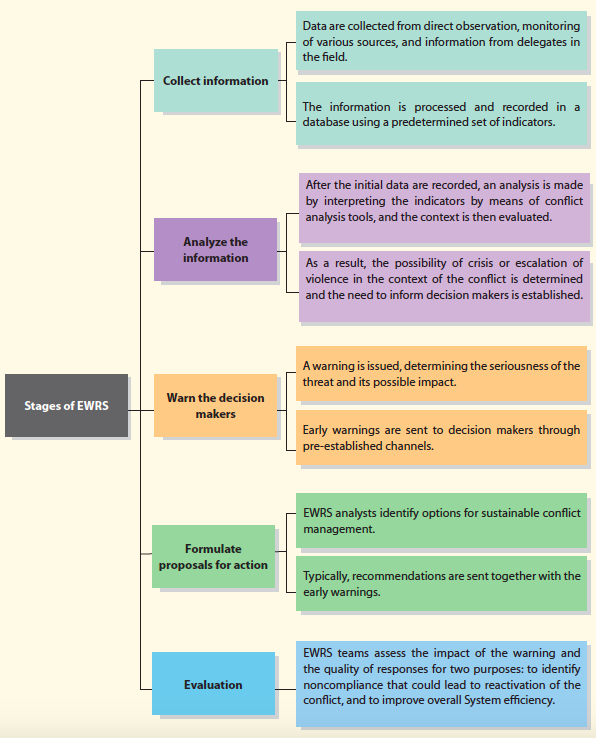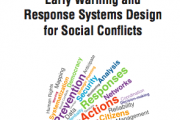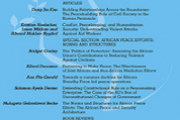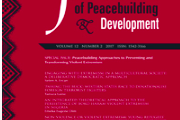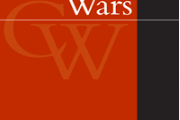Early Warning Early Response
Early warning usally consists of data collection and verification and risk analysis idenfifying conflict trends and dynamics at various levels. On the basis of this analysis recommendations can be made for timely and appropriate preventive action, or early response options, to targeted stakeholders. Each early warning and early response (EWER) system has a specific mandate, organizational set-up, information sources, analytical methods and links to decision-making. At its core, EWER is a mechanism for the prevention, or reduction of the impact, of conflicts.
Through a regular feed of information and analysis on evolving conflict trends and dynamics, EWER can provide the basis for a shared problem definition of conflict risk. As such, it can inform crisis management decision-making by guiding priority setting and programming. EWER can also serve as a more local-level warning mechanism that enables communities and local authorities to seek safety or prevent the outbreak of violence; or as a platform for local actors to monitor and analyze sub-national conflicts and initiate programmes to address the causes of violence.
Key elements of effective EWER capacities
Good practice across generations of early warning systems highlights six key elements (source: Saferworld, 2015):
1.Nurture field networks: Given the risk of misinformation in conflict areas, a good early warning system is based in proximity to (if not in) the conflict area, has strong field networks of monitors and uses multiple sources of open source information.
2.Use only open source information: The use of open sources facilitates collaborative (and integrated) responses to conflict. Grey or black (secret) information is not easily shared and systems using such sources have mainly an internal client base. Good practice in response-focused systems is therefore the exclusive use of open source information.
3.Mix methods: Response planning is best informed by qualitative analysis. However, trends monitoring is also useful and is best done by using quantitative methods. As such, a good early warning system uses a mix of qualitative and quantitative analytical methods.
4.Use technology: Technology (particularly the use of mobile phones) enables speed in information collection and in sharing information and alerts.
5.Report regularly: Regular monitoring of conflict situations differentiates the work of an early warning system from ad hoc conflict analysis exercises. It is important as conflict dynamics evolve rapidly and are fluid. A good early warning system monitors and reports regularly to its client base, with a menu of different types of reports and briefings.
6.A two-way connection between warning and response: Most early warning systems are focused on catalyzing response, but in practice it has proven challenging to establish a link between Early Warning and Early Response. To address this gap, good practice indicates that the best way of linking warning and response is to foster an exchange between warners and responders; that is, by drawing early warning analysts to brief response planners, or using field monitors as first responders to address conflicts.

